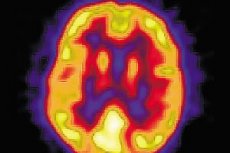Constant potentials of the brain
Last reviewed: 23.04.2024

All iLive content is medically reviewed or fact checked to ensure as much factual accuracy as possible.
We have strict sourcing guidelines and only link to reputable media sites, academic research institutions and, whenever possible, medically peer reviewed studies. Note that the numbers in parentheses ([1], [2], etc.) are clickable links to these studies.
If you feel that any of our content is inaccurate, out-of-date, or otherwise questionable, please select it and press Ctrl + Enter.

Registration of the level of the permanent potential of the brain is a special section of brain electrophysiology. The level of constant potential with amplitude of millivolt range and its ultra-slow oscillations (ω-waves with periods from several seconds to several tens of minutes and even hours) is the integral reflection of brain metabolism (the sum of the membrane potentials of neurons and glial cells, as well as potentials of blood-brain barrier and vessels ).
Methodology of research
The level of the constant potential is recorded from the surface of the scalp with the help of non-polarizing electrodes and direct current amplifiers. According to the international standard, 5 active electrodes are fixed on the scalp at points Fpz, Cz, Oz, T3 and T4 according to the International system of 10-20% for EEG. The reference electrode is placed on the wrist of the right hand. Using a computer program, the level of the constant potential is measured and the topographic mapping of its values on the scalp is made.
Interpretation of results
Intensive studies of the diagnostic informative value of the level of constant potential in healthy subjects of different sex and age in different functional states, as well as in patients with logoneurosis, drug addiction, Alzheimer's disease, Parkinsonism, stroke and brain tumors showed that in normal and stress conditions, increased local cerebral blood flow, increased cerebral metabolism and a decrease in blood pH. With aging and pathological conditions, when local cerebral blood flow decreases, increasing the level of the constant potential and lowering the pH of the blood reflect an increase in the anaerobic processes of glycolysis.


 [
[